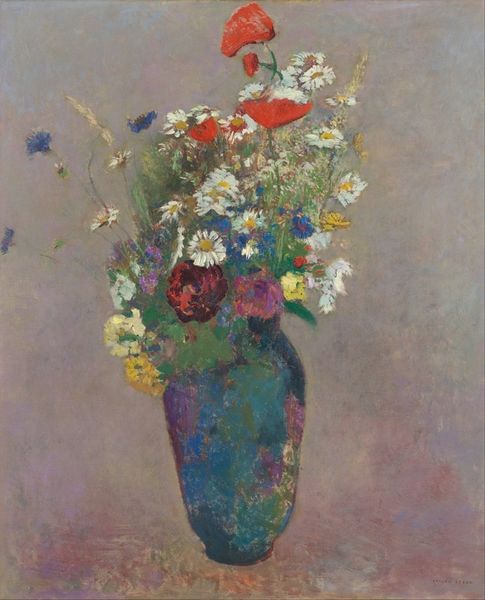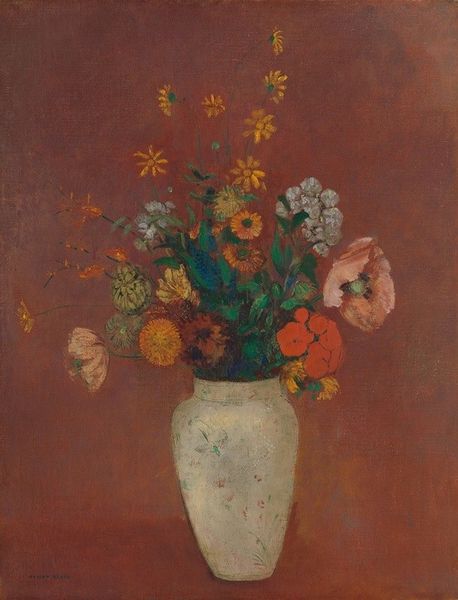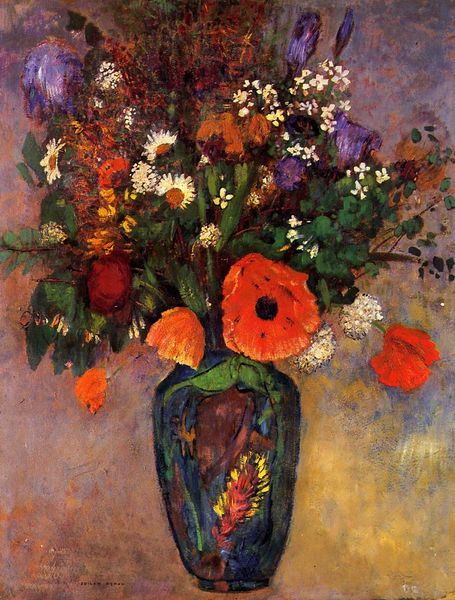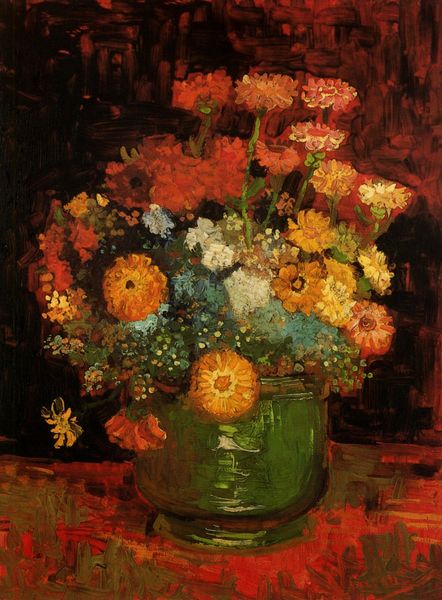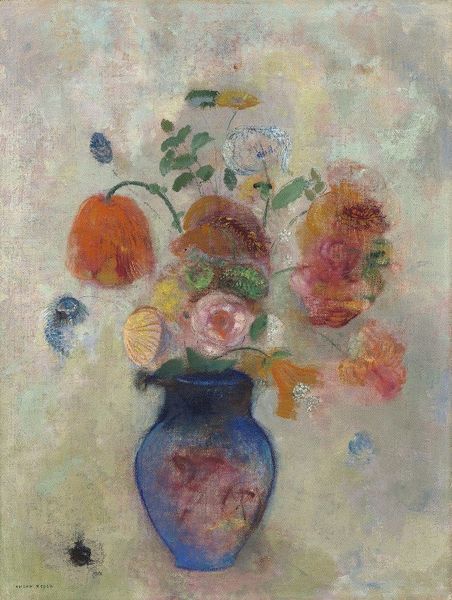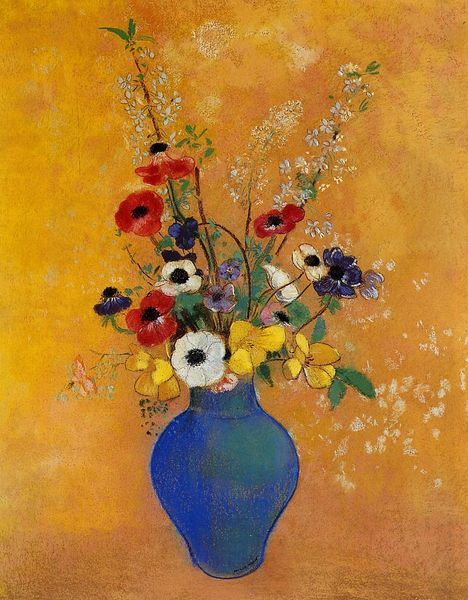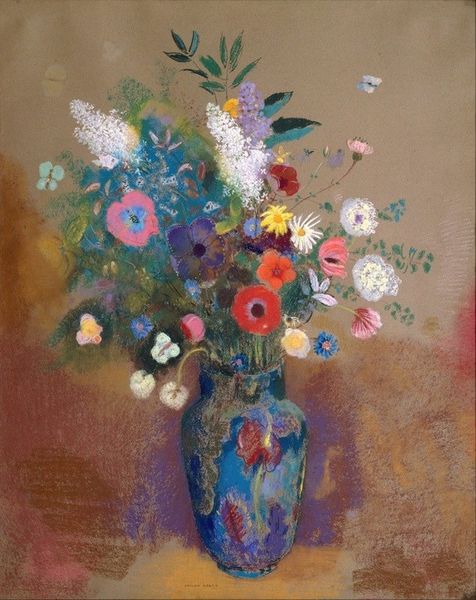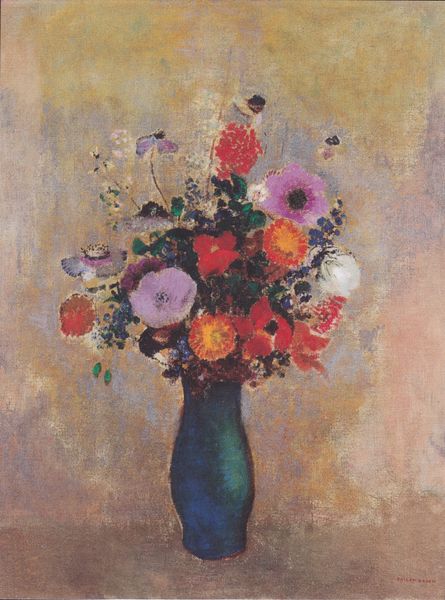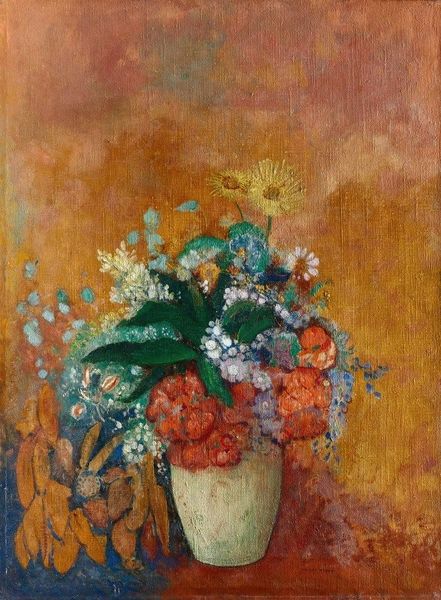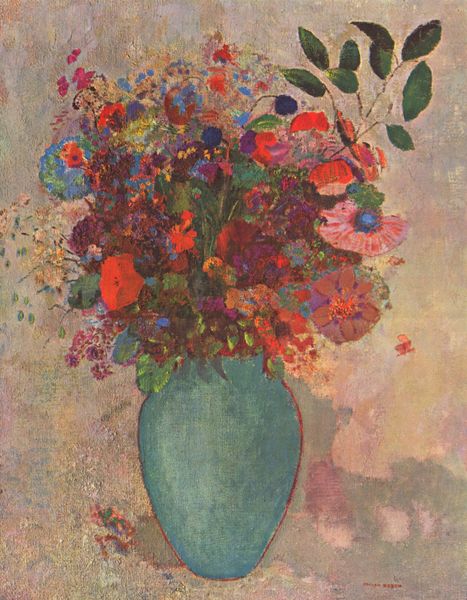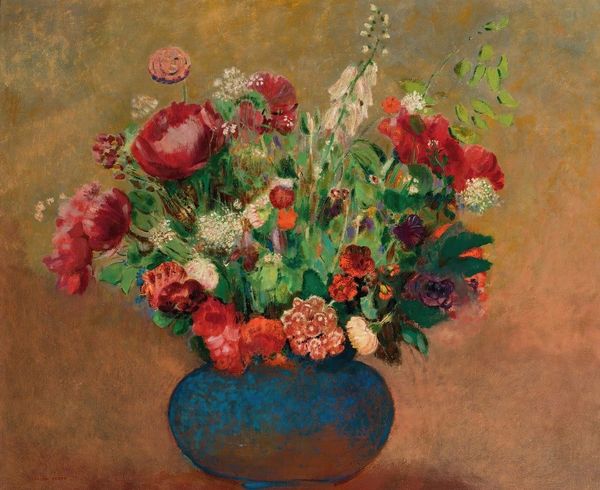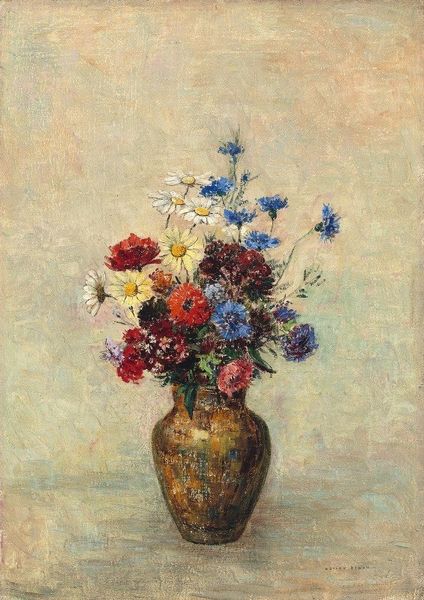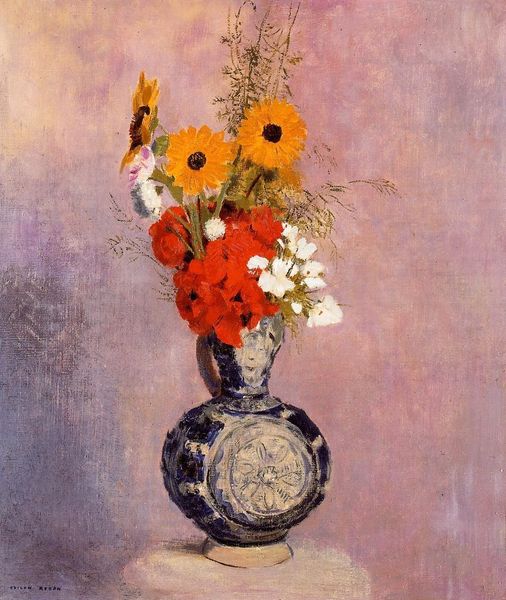
Copyright: Public Domain: Artvee
Editor: So, here we have "Grand bouquet de fleurs des champs", a vibrant oil painting by Odilon Redon, dating back to around 1900-1905. The bouquet just explodes with color! It feels almost chaotic, but in a beautiful, untamed kind of way. How do you interpret this work? Curator: I see a deliberate move by Redon to subvert traditional expectations of still life, especially within the social context of the era. Floral paintings were often relegated to the domestic sphere, associated with femininity and passivity. But here, the riot of color and almost hallucinatory quality disrupts those norms. The flowers aren't neatly arranged; they burst forth. What could this unruliness symbolize? Editor: Maybe it's about breaking free from those restrictive roles? Expressing a more empowered or rebellious spirit? Curator: Precisely! Redon, operating in a time of significant social change and rising feminist movements, may be commenting on women’s changing role in society. The overflowing bouquet could symbolize the expanding potential and vibrancy of women breaking free from traditional constraints. Consider, too, how he uses Orientalist style elements – often appropriations – within the Post-Impressionist framework to complicate and perhaps critique exoticized views. Does that connection impact how we view it? Editor: It's interesting to think about it that way – like he's pushing back against expectations on multiple fronts, both artistically and socially. It’s much more complex than just a pretty picture. Curator: Absolutely. Art doesn't exist in a vacuum. By situating it within the social and political landscape, we can unlock richer, more nuanced interpretations. Editor: I never would have considered that without your insight! I’ll definitely look at art with a different lens from now on. Curator: I'm glad. Keep exploring and questioning – that’s where the real learning begins.
Comments
No comments
Be the first to comment and join the conversation on the ultimate creative platform.
